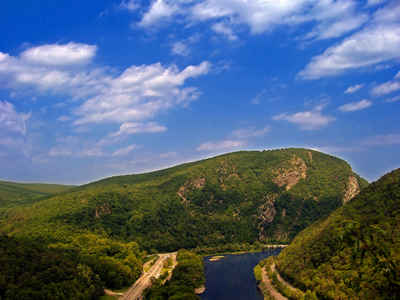Delaware Counties
Delaware has three counties: New Castle, Kent, and Sussex, the fewest Counties of any US state. The origin of the county boundaries go back to former court districts. The powers of the counties' legislative bodies are limited to issues such as zoning and development.Kent County, Delaware
Kent County Education, Geography, and History
Kent County is a county located in the central part of the state of Delaware. Based on the 2010 census, the population was 162,310. Kent County was created on June 21, 1680 from Whorekill (Hoarkill) County and New Castle County (originally named St. Jones County, renamed in 1682). The county seat is Dover, the state capital. The county was named by William Penn for the English county of Kent.
Kent County comprises the Dover, DE Metropolitan Statistical Area, which is included in the Philadelphia-Reading-Camden, PA-NJ-DE-MD Combined Statistical Area
Etymology - Origin of Kent County Name
Kent county was named in 1682 by William Penn for the English county of Kent.
Demographics:
County QuickFacts: CensusBureau Quick Facts
Kent County History
Kent County is one of three counties in the small state of Delaware (only Rhode Island is smaller). In about 1670 Englishmen began to settle in the valley of the St. Jones river formally known as Wolf Creek.
Originally part of the Hoornkill district court established by the Dutch Governor Colve in 1673. Hoornkill was divided into Saint Jones County and Deal County in 1680.
William Penn chartered Kent County as the Successor to St. Jones. Penn ordered a court town to be laid out, and the courthouse was built in 1697. The town of Dover was finally laid out in 1717, and became the capitol of Delaware in 1777. In 1787 Delaware was first to ratify the US Constitution, and became "the First State." Kent County was a small grain farming region in the 18th Century.
Geography: Land and Water
As reported by the Census Bureau, the county has a total area of 800 square miles (2,072 km2), of which, 590 square miles (1,527 km2) of it is land and 210 square miles (545 km2) of it (26.30%) is water.
Kent county is located close to the center of Delaware. Kent County, like all of Delaware's counties, is subdivided into Hundreds. There are several explanations given for how the Hundreds
were arrived at, either being an area containing 100 families, an area containing 100 people, or an area that could raise 100 militiamen.
Kent County was originally apportioned into six Hundreds: Duck Creek, Little Creek, Dover, Murderkill, Milford and Mispillion. In 1867,
the Delaware legislature split Murderkill Hundred into North Murderkill Hundred and South Murderkill
Hundred. In 1869, the legislature formed Kenton Hundred from parts
of Little Creek and Duck Creek Hundred.
Neighboring Counties
Bordering counties are as follows:
- New Castle County, Delaware - north
- Salem County, New Jersey - northeast
- Cumberland County, New Jersey - east
- Cape May County, New Jersey - east
- Sussex County, Delaware - south
- Caroline County, Maryland - southwest
- Queen Anne's County, Maryland - west
- Kent County, Maryland - west
- Delaware Bay; no land border







